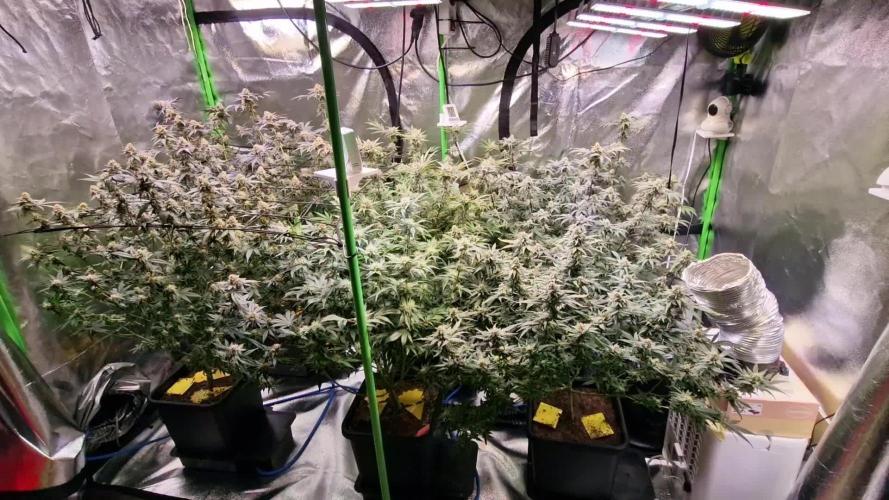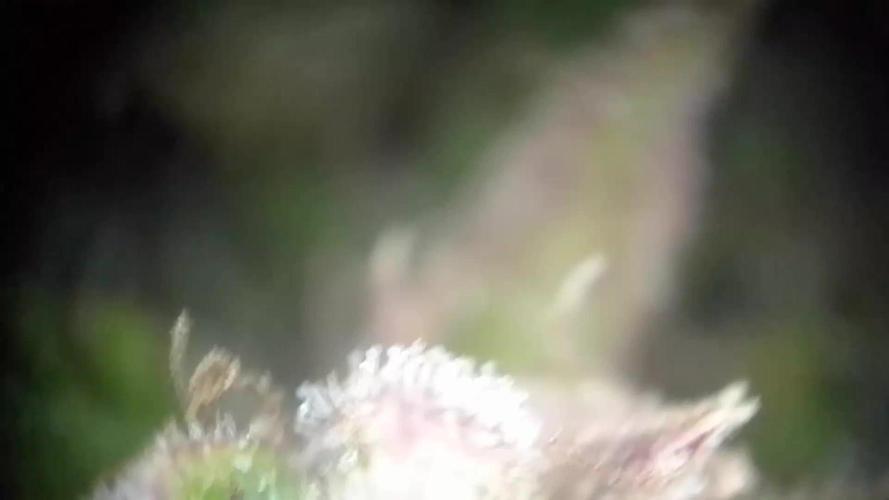The Grow Awards 2026 🏆 





























Likes
Comments
Share


@Hydro_sweetness
Follow
Hey Guys welkome back in week 11 of the Sensi Serds Silver Haze, this week i stoped giveing C4 from Mills nutrients and start to give Ultimate PK also from Mills nutrients, buds should start to bluk up and faten more and more by each day, crystals also started to cover the buds and leaves.
The NL #5 x Haze clonse are finale chilling, last week i started to gave A basic, B basic and “start” also all from Mills nutrients, i topper one already and the other one i will top this week.
Thats it for now hope you all enjoyed!
See you guys back in week 12 (almost there!)
Likes
22
Share


@Gorey
Follow
passagz in 25 liters. I sprayed nettle manure, it's just a horror, it stinks so much! So I made banana manure. I leave another week before going to 12 12, I think I can do a mid-week LST.
today I added a natural, economical and reliable system to distribute CO2, it's sweet jelly with water and baker's yeast, the distribution of CO2 is done gradually. With my container I am quiet for 90 days
Likes
53
Share


@Pr3m_85
Follow
Increased nitrogen at 7.5ml/L (EC=2.03mS/cm) this week. They seem to appreciate that. To monitor in the next few days.
Watered twice a week with Hesi-Powerzyme at 2ml/L.
May the fourth be with you 😎
Dicreased Nitrogen at 7,0ml/L. I ve got some issues with my humidity (near 40%). I try to increase it..
Peace all ✌️✌️🏽✌️🏾✌️🏿✌️🏼✌️🏻.
Likes
15
Share


@AloeLover
Follow
She's in a small tent, do you think I should flip the switch? Every time I take some bottom leaves off more come back LOL. What do you think?😎
Likes
17
Share


@Dunk_Junk
Follow
16cm vertical growth this week but she's fully entered flowering!!!!!!!!!!!
Look how bushy she got!
Processing
Likes
21
Share


@SupremeTimmy
Follow
I welcome everyone who came in for the first time or has long been following my blueberries. the girl blossoms and smells and already showers herself with trichomes.
two days ago I used iron chelate on a sheet to stimulate photosynthesis and also, due to phosphorus deficiency, introduced dry water-soluble fertilizer NPK 10/54/10
Likes
2
Share


@OldskoolHed
Follow
Getting super fat, calyx's have started turning a bit purple. Was concerned it was bud rot, inspected with jewelers loupe. Seems fine, will watch closely. I have cloudy trichromes, no ambers yet.
Likes
27
Share


@GrowBro1981
Follow
Halli Hallo liebe Growfreunde 💞
Soweit läuft alles immernoch problemlos und stressfrei👍💪😁. Habe mal die Trichome gecheckt, alles noch sehr klar, wenig milchig. Ich denke durch die große Entlaubung liegen sie etwa 10 Tage zurück. Heute ist Blütetag 54, aber die Entwicklung passt eher auf Tag 40-45 würde ich sagen, was meint Ihr? Wo sind die ganzen Experten??😅😅😅
Finde es so schade dass man hier übersehen wird, weil es einfach zuviel Diaries sind. Würde mich freuen euch in meiner Facebook Gruppe zu haben.
Ihr seid damit herzlich eingeladen meine lieben. Teilt eure Erfahrungen und Emotionen mit der Community 💗 die Gruppe heißt: "Cannabisanbau für Anfänger und Profis" und folgt mir für News: "GreenRoom-Anbau und Austausch" Das ist mein Profil 🤗🤗🤗🤗🤗🤗🤗🤗🤗🤗🤗🤗🤗🤗🤗🤗🤗🤗🤗🤗
Zurück zum Thema..😅 musste diese Woche ein Netz spannen, die Buds werden schwer, die Peyote Critical und die Lemon Shining Silver Haze brauchten etwas Unterstützung bei tragen😉 vom Entwicklungsstand her würde ich sagen die Critical ist als erstes fertig. Hat laut Breeder auch die kürzeste Blütezeit. Mal sehen was kommt
Likes
8
Share


@Crazy_Doofus
Follow
Slightly Light amber, but I'm cutting her. She really looks ripe. Also an infestation of sap eaters, so the plant is at it's end. I'm happy with the result 😁
Likes
Comments
Share


@Yiyis_Grow
Follow
Van madurando bien, se les siente super compactas algunas como piedra.
De momento no hay indicios de botrytis, que siempre ha sido un problema para mi.
Hoy revisé los tricomas pero ninguna está para cosechar aún, así que se quedarán una semana más.
5 con proceso de lavado y 1 todavía con nutriente.
Likes
28
Share


@GanjaFarmar
Follow
Got final weight of 29 grams. Which is not bad for a plant thats not been touched.
I wish i topped or trained this for more yield but still glad with what i got.
I would also recommend this for beginners as it grows with ease and minimal maintenance.
I smoked a spliff of this today, its only been in the jar for 2 days. The taste can still improve within few weeks. But the high is very strong.
5 star Breeders!!
One Love!
Likes
209
Share


@BioBuds
Follow
At the beginning of this week, I have been fighting the gnats, which are less and less now. Just some watering and gradually lowering the light and going to full power. The Orange Hill Special has been filling out great and I must say, she is a pretty plant. With some manual bending and super cropping, I'm bending the longer stalks sideways and we are off. What I actually do is more of an intuitive hybrid between mainlining (where I bend the whole plant 90 degrees at the third week), LST (where I bend branches outward slightly, without tying), HST / Super crop (where I bend the stems 90 degrees with the clips or manually), after which I keep bending outward to SOG and, put the net over to end in SCROG.
This same method gave me the canopy in my prize-winning Gelato 33 grow. Check it out if you haven't seen it, it was my first experimental accident that led to beta test of Super Soil mixture 0.7, now we are at Alpha version 1.00 and testing great so far if I say so myself. I haven't seen such lush greens in my own grows, only outdoor. They seem uber-healthy and resilient, with very sturdy stems and leaves. Way more resilient than previous strains I tested in the beta soil.
The light is performing, the natural color of it makes everything pop. Mars Hydro has a winner with the SP-3000. Check out their site: www.mars-hydro.com
Thank you @MarsHydroLED for letting me test it, hook them up for a great deal or info on their products!
Halfway through this week, I took the clips out, AND...... we switched them to go into flowering. After a day the stretch is already visible. I had to bend them again after a couple of days. Now we have almost a tent filling foundation for a maximum result canopy of buds.
I was wanting to amend the soil with flowering additions (see recipe in yellow image), but I'm holding it off for two reasons. A/ The leaves are still so green and lush, I think there is an abundance of nutes. B/ @Haoss mentions his suspicions on his OHS grow (@#CannapediaProGrowersCup Orange Hill that very sadly went hermie on him) that nutrition in this phase could have had an influence, after asking what happened to him. I would have loved to see that grow to full harvest. But it makes me a bit cautious. if Haoss (whom I consider to be one of the star growers here) couldn't prevent this, what chance have I?
I'm waiting until the girls start asking for nutrients. They'll show me what they need in their own time. For now this soil is the shizzle (also quite literally) and Im happy with how everything is going. I remember much more hassle and steering in the last grow. This grow, even the Gorilla runt seems happy.
I now water them 3 liters of water / Perma tea mixture every 4 days, every 3rd watering I don't do the tea. This makes for fewer gnats and this soil seems to hold water nicely, also due to the hydro corn.
What I like is there is always some unforeseen circumstance, a tilt of the tables, some battle to be fought which delivers in big harvests or, in worst case, no harvest at all. It makes it more exciting, when your heart is at stake, we pour a lot of love and attention in the ladies.
So with hopes, but not too high, we go into flowering. Thank you all for joining me again in this Orange adventure! I hope you all had great weeks, germed seeds, extreme growth and buds bursting with trichomes!! See you next week!
Hug Bud
PS Sunshine made her first appearance, as she promised on the Gelato 33 grow. She is still a bit camera shy, so her digital alter makes an appearance first, if you all want to see more of her and my other helpers, let me know in the comments. Sunshine will make a real appearance if yall are real nice to her.
Likes
62
Share


@Chucky324
Follow
Hello.
I've harvested the Mega Mouth. WOW!!! I'm very impressed with this strain. Over 1.5 k for 5 plants. and it was finished by Aug 20 with the tents help.
I'm trying some new (for me) categories to add to my report.
Plant Stretch (PS) 1 to 5- 1 is hardly any stretch.
Bud Mutation (BM) 1 to 5- 1 is a beautiful normal bud- 5 is big weird growths like foxtails.
Trim- How easy or hard it was to trim up 1- you blow on the branch and hang it up. 5- Is very hard to trim takes a long time.
About- Best guess on the THC % (I've been smoking a long time)
Resin- 1 is super slippery 5- is very sticky like Gorilla Glue.
Size of Buds (SOB) 1- is very small 5- is the biggest buds
Dense- 1- is the lightest or fluffiest 5- is the rock hard buds your bud buster has trouble busting up.
Plant #1 Wet Trim 1647 g
PS. 3.5
BM 3.5
Trim 4
About 21%
Resin 4
SoB 4
Dense 4
Finished Dry Weight 289.5 g or 10.33 oz.
Plant #2 Wet trim 1606 g
PS 3,5
BM 3.9
Trim 4
About 22%
Resin 3
SoB 4.7
Dense 4.3
Finished Dry Weight- 302 g or 10.78 oz.
Plant #3 Wet Trim 1635 g
PS 3.7
BM 3
Trim 2.8
About 20%
Resin 2.8
SoB 3.7
Dense 4.5
Finished Dry Weight- 314 g or 11.21 oz.
Plant #4 Wet Trim 1753 g
PS 2.5
BM 2.5
Trim 3
About 22%
Resin 4 Falls off easily- Clumpy
Dense 2.5
Final Dry Weight- 343.5 g or 12.26 oz.
Plant #5- Wet Trim 1787 g
PS 3.5
BM 3.7
Trim 3
About 24%
Resin 2.5
Dense 2.5
Finished Dry Weight- 355.5 g or 12.69 oz.
The taste is sweet and smooth to go down with a nice balanced buzz. There was some pests around. I found thrips damage in veg and got some Spinosad to take care of that. Saw some fungus gnats around but they didn't do much damage. Easy to grow and trim. This is a recommended strain.
Chuck.
Likes
1
Share


@Professor_Chaos
Follow
Beginning of week..
As I watered this morning (no nutes at 111 PPM), the runoff came out at 830 PPM.. so the plant may not be taking up as much nutes? Idk.. possibly.. but since I'm so close, I've decided to just cut the nutes in half while completely removing CalMag and Hydroguard.. they shouldn't be doing much at this point anyway.. temps were a little cooler the last couple weeks (not so much this week) so it's helping purples come out! Wish I could get it even cooler.. but the flush should help her reveal beauty!.. she's already so gorgeous, to me 😍
Mid week..
She is absolutely stunning! So the last time I fed, the runoff TDS was coming out less than it was going in.. 700 PPM, good deal.. but when I watered the next time, the runoff TDS came out 200 PPm more.. like 900 PPM.. so I watered the next day and it came out 800 PPM.. so today I watered with FloraKleen and it came ou 700 PPM.. the days I watered was only 80 - 100 PPM going in.. no reason for the runoff to have jumped up like that out of nowhere.. I haven't been rinsing off the saucer as I should have been (daily).. just pulling the runoff out as soon as I can.. maybe it is just built up on the saucer?? Idk.. I guess I should attempt to pull it out and rinse it at least once or twice a week.. other than that, she is still turning purple ALL OVER more and more each day! Beautiful smell.. sweet, citrus, slightly skunky.. not overwhelmingly skunky.. but she isn't too far off.. so, I was thinking I will just keep watering till harvest.. not flushing the medium in one watering.. just normal amount of watering with a normal amount of runoff and she can use up what's left in the medium for this week, then the 2 week flush (still just watering normal amounts daily) will begin.. not this week even tho I'm not giving any nutes, due to a salt build-up going on somewhere in the rootzone.. but we shall see!
End of week..
Wow she is getting close! So dank! So fruity! Definitely got the skunky phenotype but not lacking on the berries, whatsoever. Seeing many cloudy trichomes.. still a few clear but the way she is maturing, I believe she will be ready in just another 1 week, 2 if I'm feeling patient (probably not). This week was literally nothing but water. Wait, I did do one dose of FloaKleen due to the salt build-up about mid week.. never used anything else this entire week.. so this week was just a slow flush.. will have an update on the runoff tomo (beginning of next week) with more pics! On to the next...
Likes
22
Share


@wheedtobeus420
Follow
Day 41. She’s looking happy and healthy and full. She got defoliated so the light can get to her lower blood sights and hopefully make them larger and more dense. She’s eating heavy and drinking a ton of water. I’m happy with how she’s progressing so far. Sweet seeds always hits it out of the park.



























